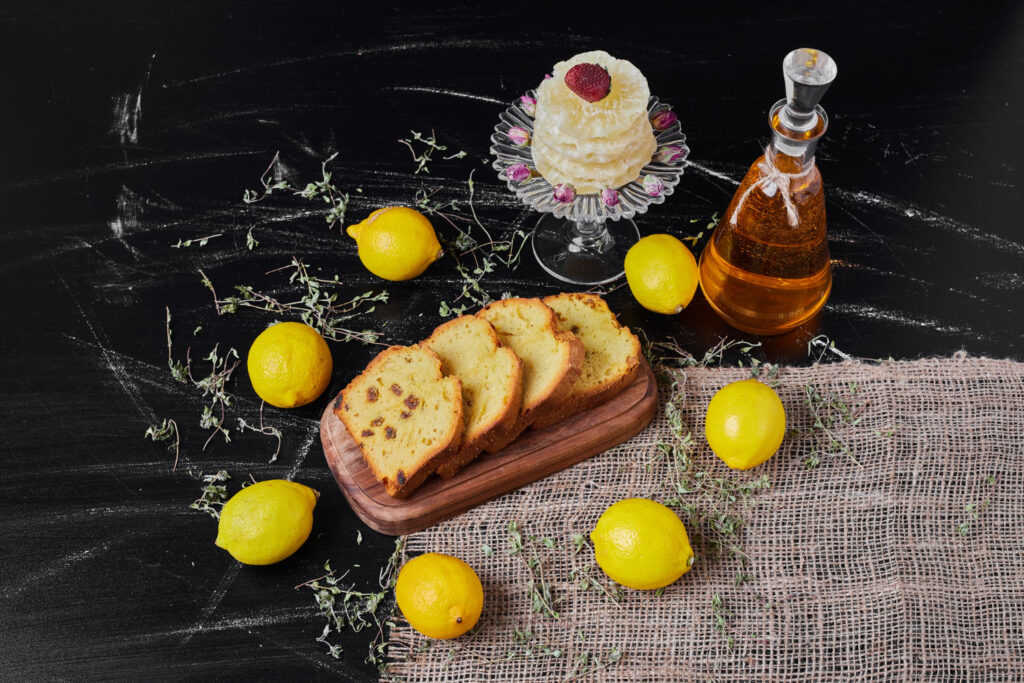When I first attempted Mary Berry’s Lemon Victoria Sponge, I definitely overcomplicated things. I feared the lemon wouldn’t stand out against the buttery sponge, so I doubled the zest. Big mistake—it threw off the balance and ended up tasting more like a lemon-scented candle than a cake. Not exactly the result I was hoping for.
But once I let the sponge do its thing and let the lemon curd take center stage, everything came together perfectly. The end result? A light, sunny cake with just the right amount of zing. It’s the kind of treat that looks simple but disappears fast. Let me show you what made all the difference.
WHY THIS ONE WORKS SO WELL
What won me over was the texture. Many lemon sponges overdo it—too much zest and not enough lift. But Mary’s method uses chilled margarine (yes, really!) and a one-bowl technique that keeps things simple, yet wonderfully light.
The secret? Balance. The sponge is soft, the lemon curd provides the perfect sharpness, and it all comes together in less than an hour. It’s a straightforward, no-fuss cake with a big payoff.
INGREDIENTS + WHY THEY MATTER
-
Chilled Margarine – Don’t substitute with softened butter unless you’ve tested it. Cold margarine results in a lighter crumb and lifts better using this method.
-
Superfine Sugar – Creams quickly and dissolves well for that signature airy texture.
-
Self-Rising Flour + Baking Powder – Yes, both! The self-rising flour has raising agents, but an extra tsp of baking powder gives the lift it needs.
-
Lemon Zest – Adds fragrance without making it too sour. Just be careful not to overdo it (trust me, I learned the hard way).
-
Lemon Curd – The true star of the show. It’s sharp, sweet, and a much better filling than frosting.
MAKING IT YOURS (WITHOUT RUINING IT)
-
Egg-Free? I tested an aquafaba swap (3 tbsp per egg). The rise wasn’t as tall, but it still worked for a traybake version.
-
Dairy-Free? Use a plant-based margarine that stays solid when chilled. Vitalite or Flora Plant Butter worked great for me.
-
Want It Sharper? Add a tablespoon of lemon juice to the curd before spreading it. Just don’t mix it into the batter—it can mess with the rise.
-
Fancy a Twist? I once tried it with a mix of raspberry jam and lemon curd, topped with fresh raspberries—it worked surprisingly well!
MISTAKES I’VE MADE (AND HOW TO AVOID THEM)
| What Went Wrong | Why It Happens | How to Fix It |
|---|---|---|
| Cake too dense | Margarine was too warm | Use margarine straight from the fridge |
| Lemon curd soaked sponge | Assembled while warm | Let both the sponge and curd cool fully |
| Cake stuck to the tin | Didn’t line the tin with paper | Always line the base, even if greased |
HOW TO MAKE MARY BERRY’S LEMON VICTORIA SPONGE
-
Preheat your oven to 350°F (or 320°F for fan-assisted). Line two 8-inch sandwich tins with baking paper and grease the sides well.
-
In one large bowl, add chilled margarine, superfine sugar, eggs, self-rising flour, baking powder, and lemon zest.
-
Using an electric hand mixer, mix everything together for 1-2 minutes until smooth. The mixture should be thick but fluffy, and pale in color.
-
Divide the mixture evenly between the tins and smooth the tops.
-
Bake for 25-30 minutes, until golden and springy to the touch. Mine were perfect after 27 minutes.
-
Cool the cakes in the tins for 5 minutes, then gently turn them out onto wire racks. Peel off the paper and let the cakes cool fully.
-
Once cool, spread lemon curd on one layer, sandwich it with the other, and sprinkle a little sugar on top
TIPS FROM MY KITCHEN
-
I always use a microplane zester—it only picks up the yellow zest and leaves behind the bitter pith.
-
My oven tends to brown things quickly, so I cover the top with foil after 20 minutes if it’s getting too golden.
-
To ensure even baking, I weigh the batter and divide it equally between the tins (this guarantees a perfect rise).
-
If the lemon curd is too runny, I chill it for 15 minutes before spreading it on the sponge.
STORAGE + SERVING
-
This cake keeps for 3-4 days in an airtight tin. On warmer days, store it in the fridge—but let it come to room temperature before serving.
-
It freezes well without the curd. I freeze the layers wrapped tightly, and then thaw and fill them with fresh curd when ready.
-
For the perfect pairing, serve it with a pot of Earl Grey tea or, if you’re like me, some cold leftover roast chicken (don’t knock it till you try it—it works!).
LEMON SPONGE FAQS
Q: Can I use butter instead of margarine?
A: Technically, yes, but it will change the texture. The cake tends to be denser and less airy with butter.
Q: Can I make this in one tin and slice it?
A: You can, but it will take about 40-45 minutes to bake. Make sure to let it cool completely before slicing, or it may tear.
Q: Is store-bought lemon curd okay?
A: Absolutely. Just steer clear of the cheaper brands with glucose syrup as the first ingredient—they lack the depth of flavor.
Q: Why do I need both baking powder and self-rising flour?
A: This is Mary’s secret for extra lift! The extra teaspoon of baking powder gives the cake a little more buoyancy without making it dry.
Q: Can I add poppy seeds?
A: Yes! About 1 tablespoon works beautifully. They add texture and pair perfectly with the lemon








